THE WAR OF THE SEXES (VICTORIAN STYLE)
Books about differences and conflicts between men and women,
first published in the 19th century and early in the 20th
century. 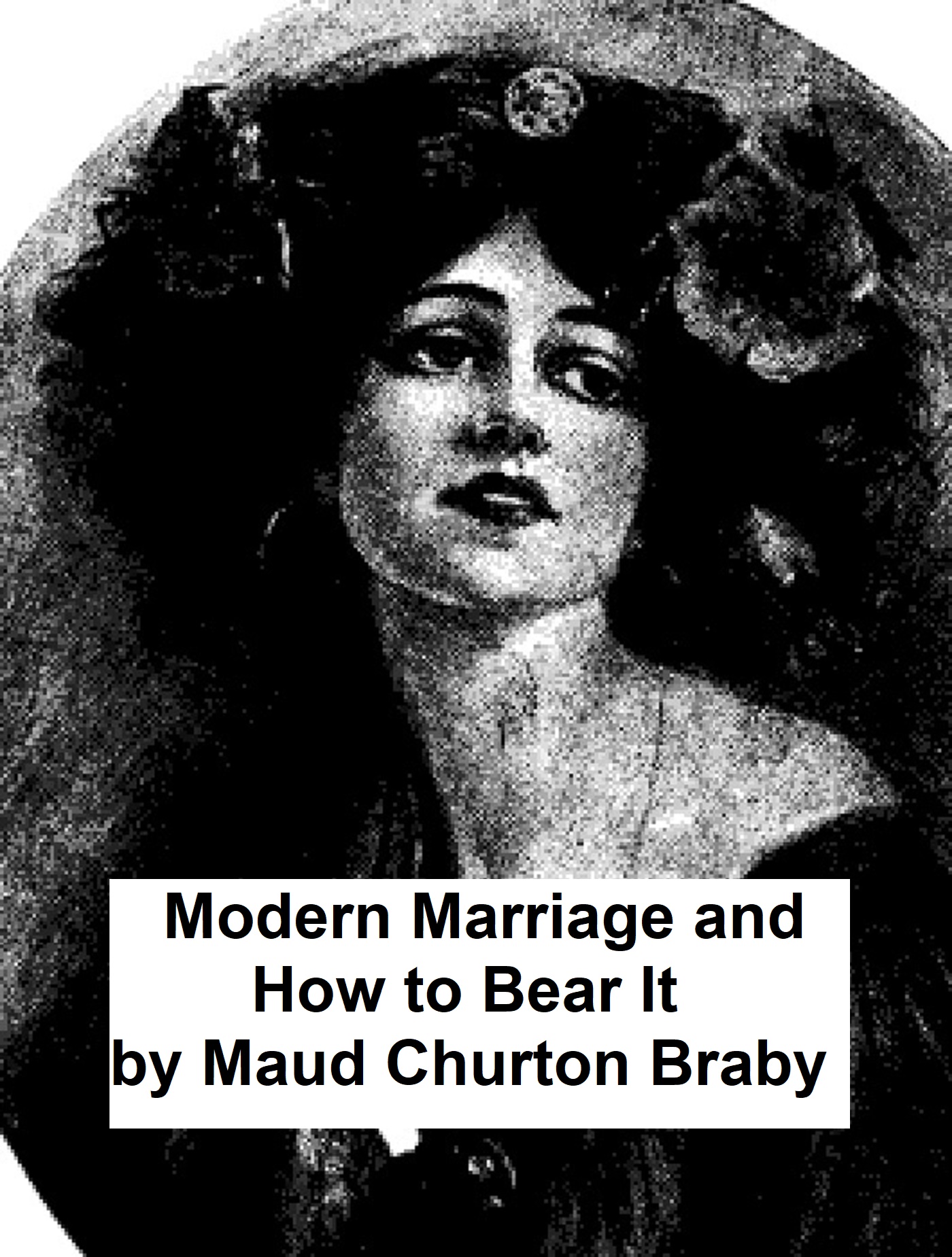 Modern Marriage and How
to Bear It by Maud Churton Braby
Modern Marriage and How
to Bear It by Maud Churton BrabyPractical and humorous advice, first published around 1900. The first few chapters are entitled: The Mutual Dissatisfaction of the Sexes, Why Men Don't Marry, Why Women Don't Marry, and The Tragedy of the Undesired.
99 cents at Kobo
99 cents at Nook (Barnes and Noble)
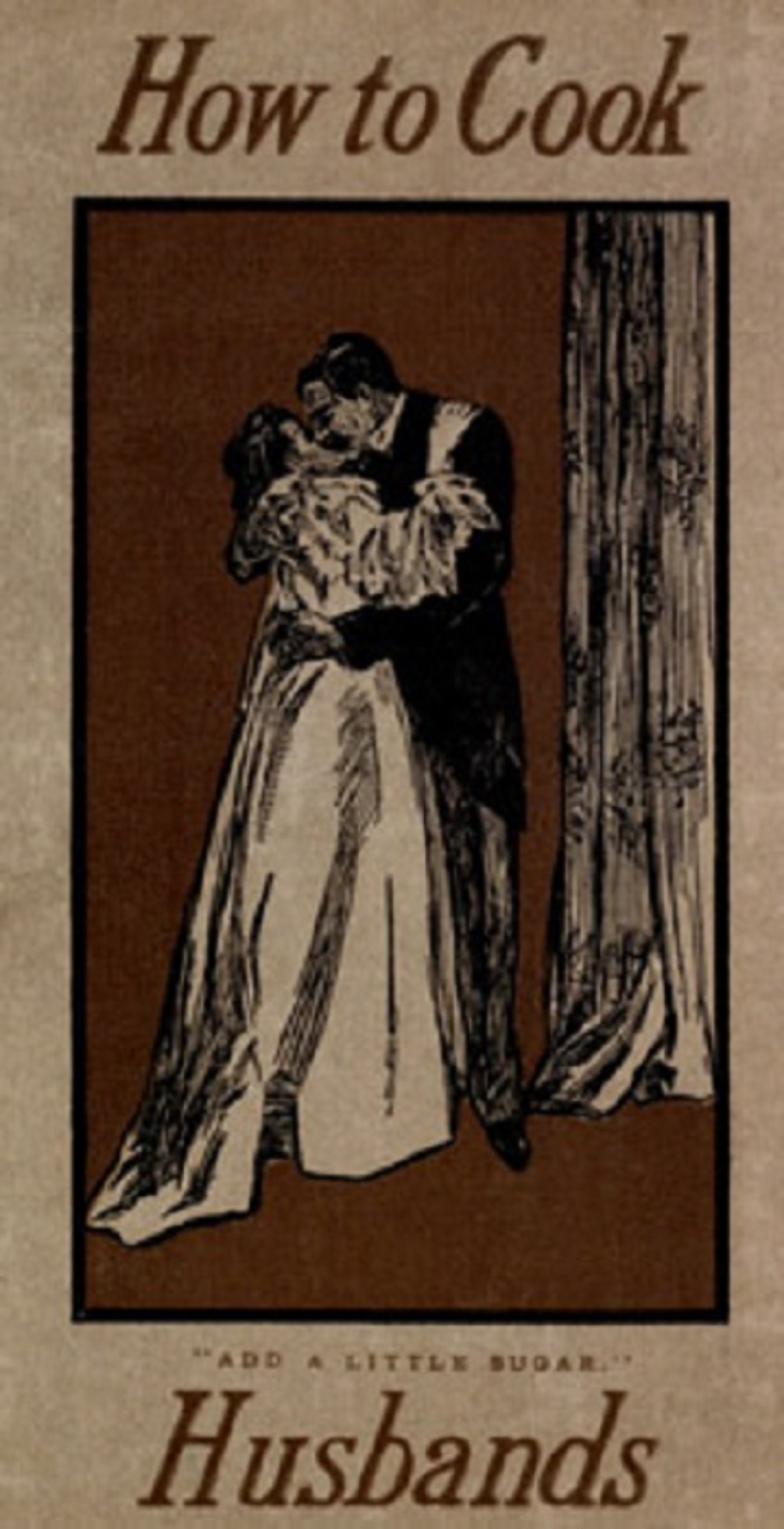 How to Cook Husbands by
Elizabeth Strong Worthington
How to Cook Husbands by
Elizabeth Strong WorthingtonHumorous novel, first published in 1898. "They are really delicious -- when properly treated." According to Wikipedia: "Elizabeth Strong Worthington (1888 - 1908) was a popular American writer during the latter part of the 1800s. Her first books "When Peggy Smiled: A Love Story" and "The Biddy Club", were published in 1888. Her next works "The Little Brown Dog" and "How to Cook Husbands" (arguably her most popular work), came along in 1898, and her final book was "The Gentle Art of Cooking Wives" in 1900. She sometimes wrote under the pen name Griffith A. Nicholas."
99 cents at Kobo
99 cents at Nook (Barnes and Noble)
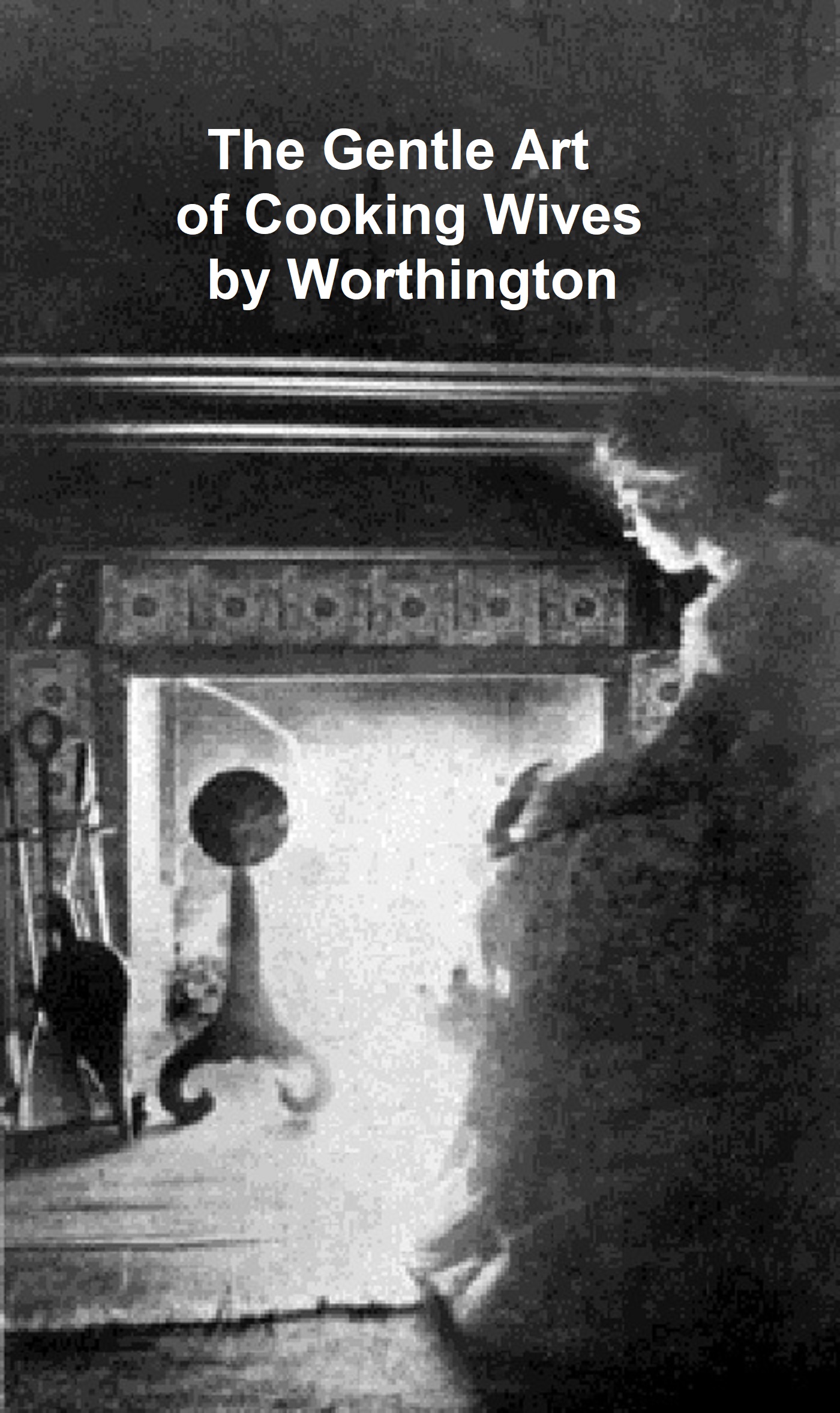 The Gentle Art of
Cooking Wives by Elizabeth Strong Worthington
The Gentle Art of
Cooking Wives by Elizabeth Strong WorthingtonHumorous novel, first published in 1900. "If a wife is allowed to boil at all she will always boil over." According to Wikipedia: "Elizabeth Strong Worthington (1888 - 1908) was a popular American writer during the latter part of the 1800s. Her first books "When Peggy Smiled: A Love Story" and "The Biddy Club", were published in 1888. Her next works "The Little Brown Dog" and "How to Cook Husbands" (arguably her most popular work), came along in 1898, and her final book was "The Gentle Art of Cooking Wives" in 1900. She sometimes wrote under the pen name Griffith A. Nicholas."
99 cents at Kobo
99 cents at Nook (Barnes and Noble)
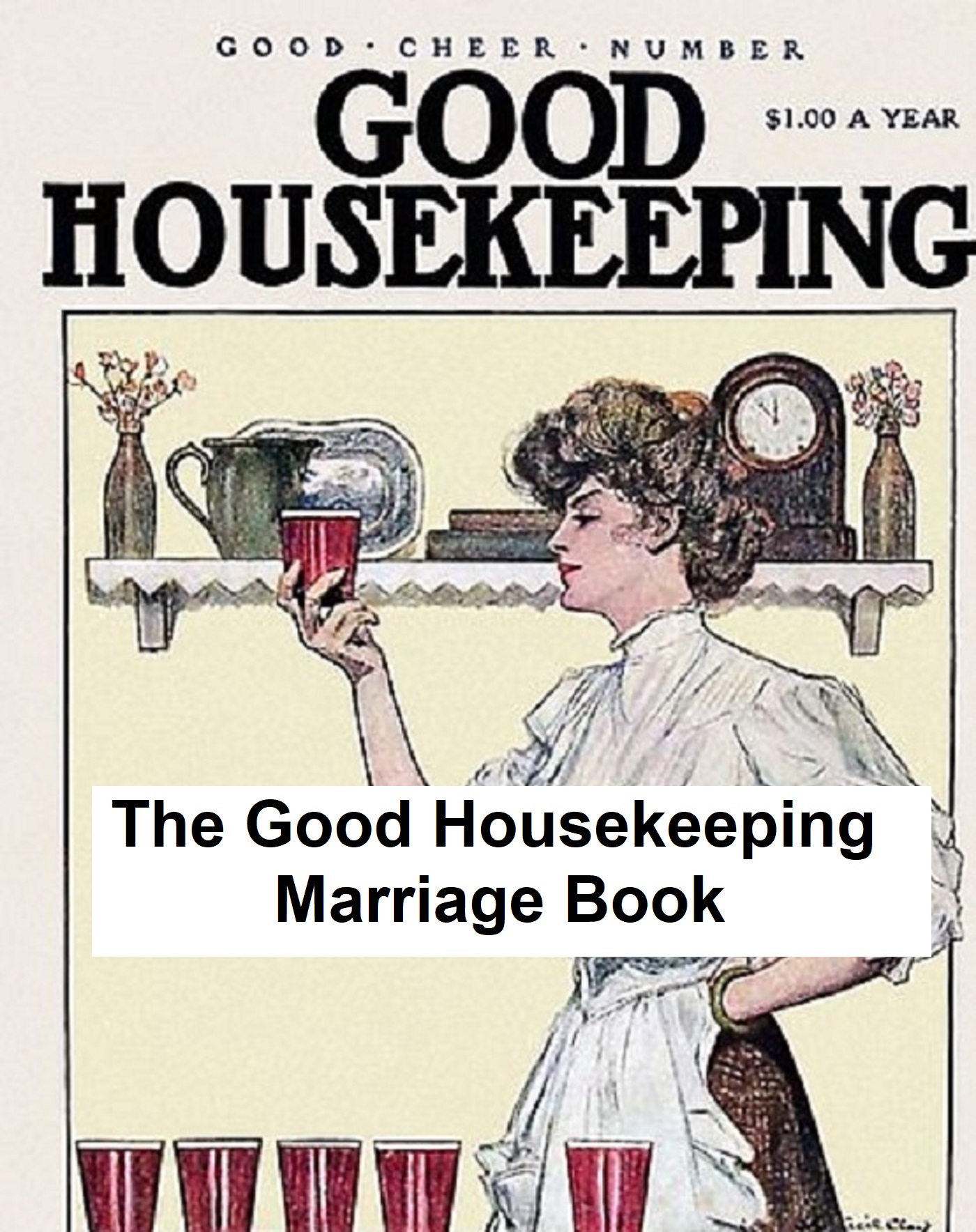 The Good Housekeeping
Marriage Book, twelve steps to a happy marriage, edited
by William F. Bigelow
The Good Housekeeping
Marriage Book, twelve steps to a happy marriage, edited
by William F. BigelowThe articles that are printed in this book made what was in my opinion the most important, the most constructive, series on a single subject that Good Housekeeping has published in the quarter century and more that I was its editor. And they might so easily never have been written--just a little item in a newspaper missed, or its significance overlooked, and these sincere and helpful articles would still be locked up in the minds and hearts of the men and women who wrote them. For it all happened just like that. Students in one of the larger California universities asked that a course in marriage relations be given--and a New York newspaper heralded it with a stick of type over about page 10..."
99 cents at Kobo
99 cents at Nook (Barnes and Noble)
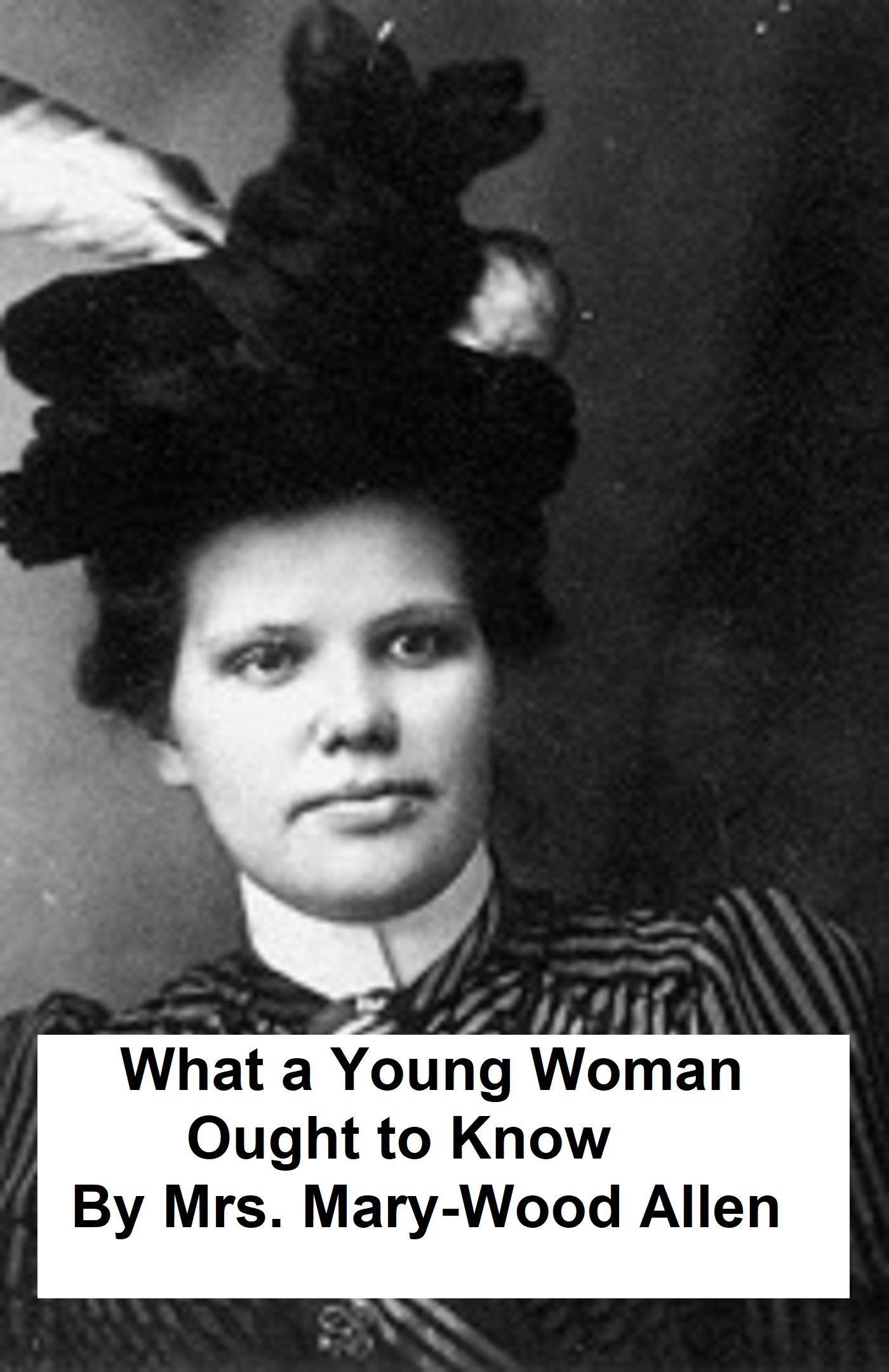 What a Young Woman Ought
to Know by Mrs. Mary Wood-Allen
What a Young Woman Ought
to Know by Mrs. Mary Wood-AllenFirst published in 1913. Part of the Self and Sex Series. According to the Preface: "During a number of years it has been my privilege to be the confidante and counsellor of a large number of young women of various stations in life and in all parts of the United States. These girls have talked freely with me concerning their plans, aspirations, fears and personal problems. It has been a great revelation to me to note with what unanimity they ask certain questions concerning conduct--queries which perhaps might astonish the mothers of those same girls, as they, doubtless, take it for granted that their daughters intuitively understand these fundamental laws of propriety. The truth is that many girls who have been taught in the "ologies" of the schools, who have been trained in the conventionalities of society, have been left to pick up as they may their ideas upon personal conduct, and, coming face to face with puzzling problems, are at a loss, and perhaps are led into wrong ways of thinking and questionable ways of doing because no one has foreseen their dilemma and warned them how to meet it."
99 cents at Kobo
99 cents at Nook (Barnes and Noble)
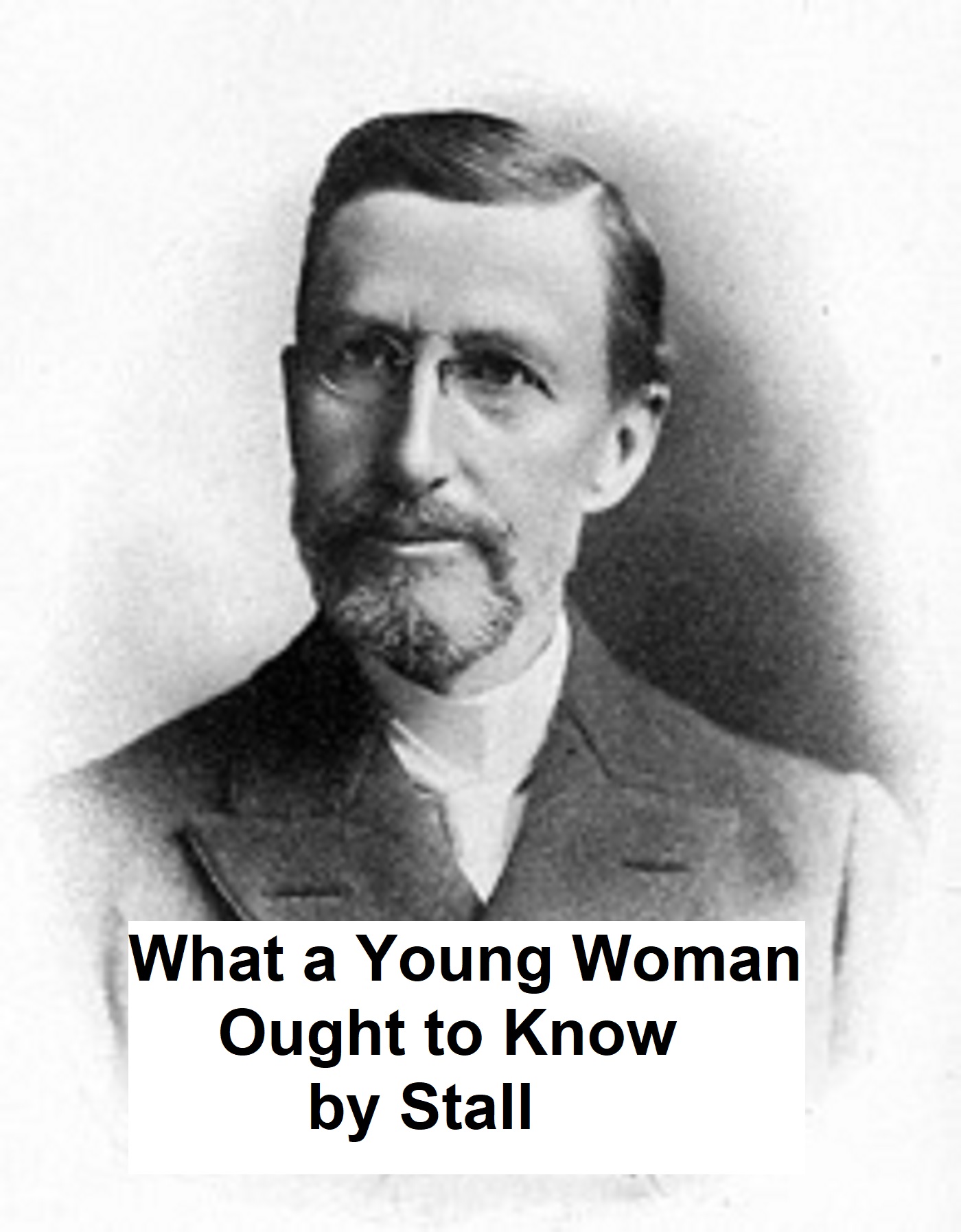 What a Young Husband
Ought to Know by Sylvanus Stall
What a Young Husband
Ought to Know by Sylvanus StallPractical advice on marital relations and sex, first published in 1897. The Preface explains: "In approaching the work which we have undertaken in these pages, we have not been blind to the difficulties which confront us in entering upon so delicate a subject. If we had thought only of these, we would never have taken up our pen in this work. We have been moved to it by the cries of disappointment and anguish which may be heard everywhere throughout our land, and by the pleadings that come up out of the dense ignorance which envelops palace and hovel alike. Knowing the importance of these "matters which are so central in our physical life, so essential in their relation to the condition, character, career and destiny of every individual, and so fundamental and vital to every institution and interest of society;" knowing also the importance of proper intelligence concerning the laws which govern our bodies, and knowing how the honest and the pure who seek information concerning these most sacred relations of human life are exposed, amid the dearth of pure and reliable books, to contamination by books whose secret character designedly fosters the very lusts and evils which they are professedly written to denounce, we have felt that we would be recreant to duty, to humanity and to God if we allowed difficulties to bar us from this important work."
99 cents at Kobo
99 cents at Nook (Barnes and Noble)
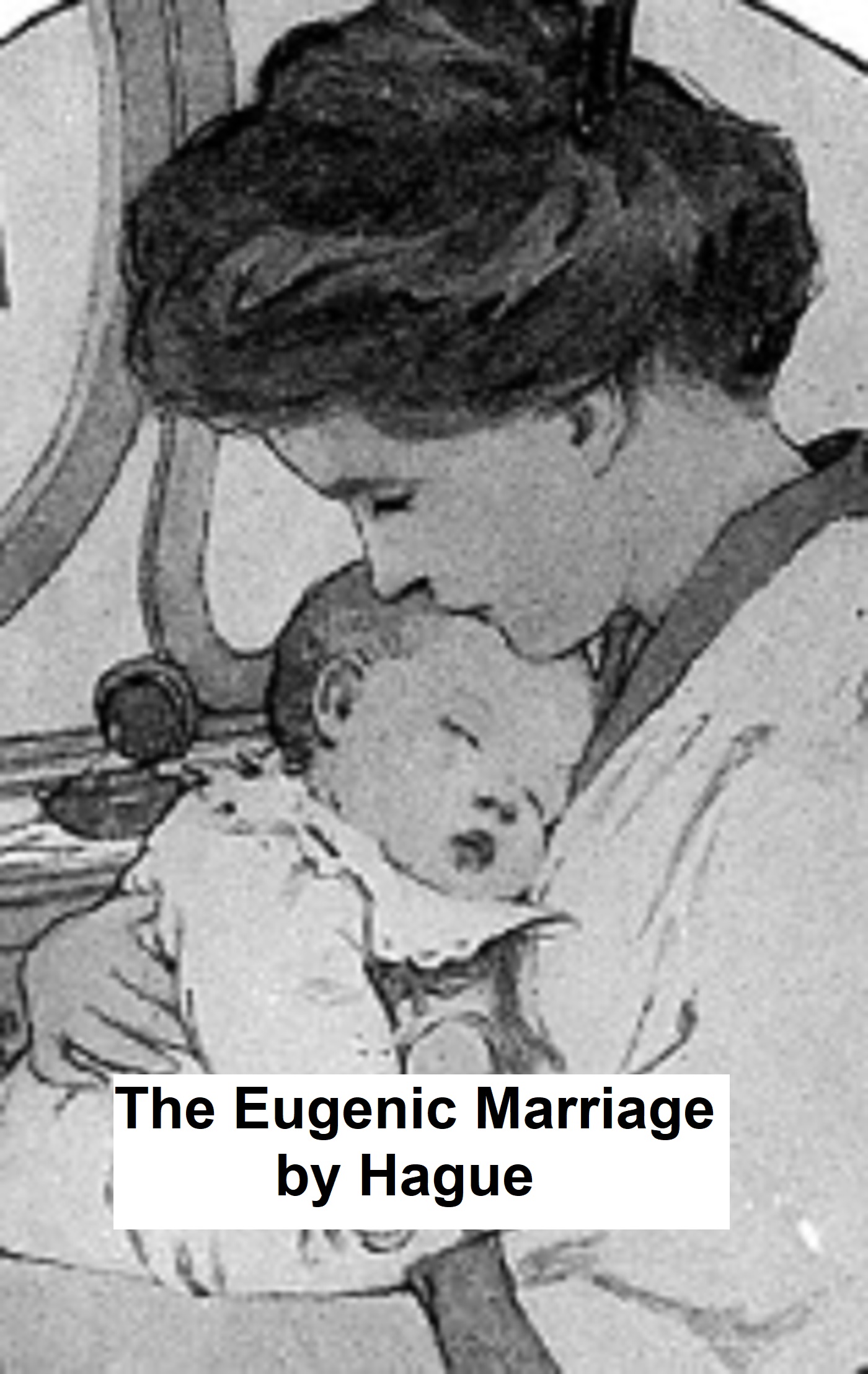 The Eugenic Marriage, a
personal guide to the new science of better living and better
babies, all four volumes, by W. Grant Hague
The Eugenic Marriage, a
personal guide to the new science of better living and better
babies, all four volumes, by W. Grant HagueFirst published in 1914. All four volumes in a single file. Do not rely on this book for medical. Rather you should use it historically, as an indication of what was known and believed at time it was written. "Despite the fact that much has been written during the past two or three years with reference to Eugenics, it is quite evident to any one interested in the subject that the average intelligent individual knows very little about it so far as its scope and intent are concerned. This is not to be wondered at, for the subject has not been presented to the ordinary reader in a form that would tend to encourage inquiry or honest investigation. The critic and the wit have deliberately misinterpreted its principles, and have almost succeeded in masking its supreme function in the garb of folly."
99 cents at Kobo
99 cents at Nook (Barnes and Noble)
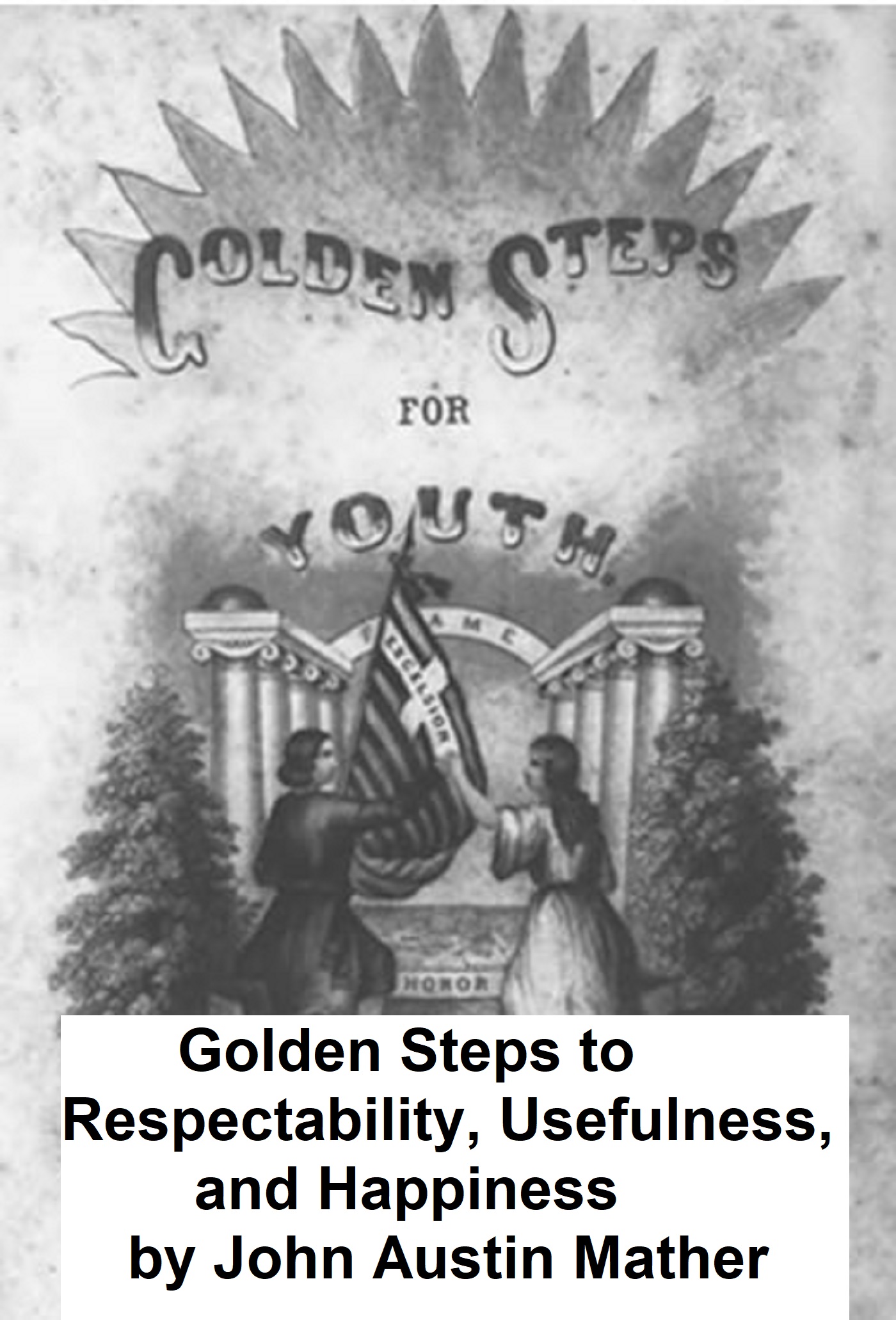 Golden Steps to
Respectability, Usefulness, and Happiness , being a series of
lectures to youth of both sexes on character, principles,
associates, amusements, religion, and marriage by John Mather
Austin
Golden Steps to
Respectability, Usefulness, and Happiness , being a series of
lectures to youth of both sexes on character, principles,
associates, amusements, religion, and marriage by John Mather
AustinAdvice, first published in 1851. "The Lectures embraced in this volume, were written for the pulpit, in the usual manner of preparation for such labor, without any expectation of their appearing in print. The author is but too sensible that they are imperfect in many features, both in matter and style. It is only in the hope that they will be of some benefit to the class to whom they are addressed, that he has consented to submit them to public perusal. He has aimed at nothing eccentric, odd, or far-fetched; but has sought to utter plain and obvious truths, in a plain and simple manner. There is no class more interesting, and none which has higher claims on the wisdom, experience, and advice, of mature minds, than the young who are about to enter upon the trying duties and responsibilities of active life..."
99 cents at Kobo
99 cents at Nook (Barnes and Noble)
Advice, first published in 1856. "My interest in woman and our common humanity is my only apology for writing this book. I see multitudes of young women about me, whose general training is so deficient in all that pertains to the best ideas of life, and whose aims and efforts are so unworthy of their powers of mind and heart, that I can not make peace with my own conscience without doing something to elevate their aims and quicken their aspirations for the good and pure in thought and life. Our female schools are but poor apologies for the purposes of mind-culture and soul-development..."
99 cents at Kobo
99 cents at Nook (Barnes and Noble)
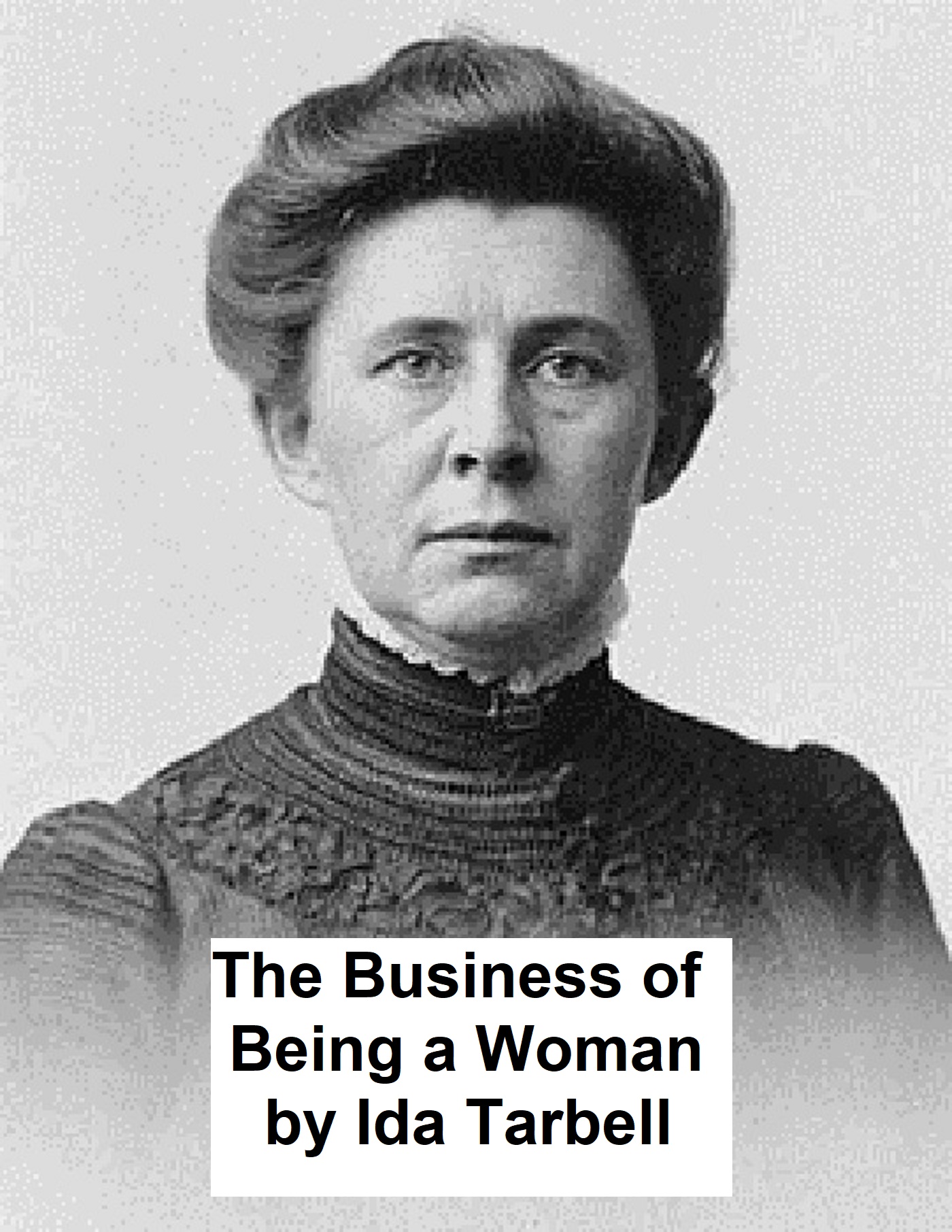 The Business of Being a
Woman by Ida Tarbell
The Business of Being a
Woman by Ida TarbellFirst published in 1921. "The object of this little volume is to call attention to a certain distrust, which the author feels in the modern woman, of the significance and dignity of the work laid upon her by Nature and by society. Its ideas are the result of a long, if somewhat desultory, observation of the professional, political, and domestic activities of women in this country and in France. These observations have led to certain definite opinions as to those phases of the woman question most in need of emphasis to-day." Accoding to Wikipedia: "Ida Minerva Tarbell (November 5, 1857 – January 6, 1944) was an American teacher, author and journalist. She was one of the leading "muckrakers" of the progressive era. She wrote many notable magazine series and biographies. She is best known for her 1904 book The History of the Standard Oil Company, which was listed as No. 5 in a 1999 list by New York University of the top 100 works of 20th-century American journalism. She depicted John D. Rockefeller as crabbed, miserly, money-grabbing, and viciously effective at monopolizing the oil trade."
99 cents at Kobo
99 cents at Nook (Barnes and Noble)
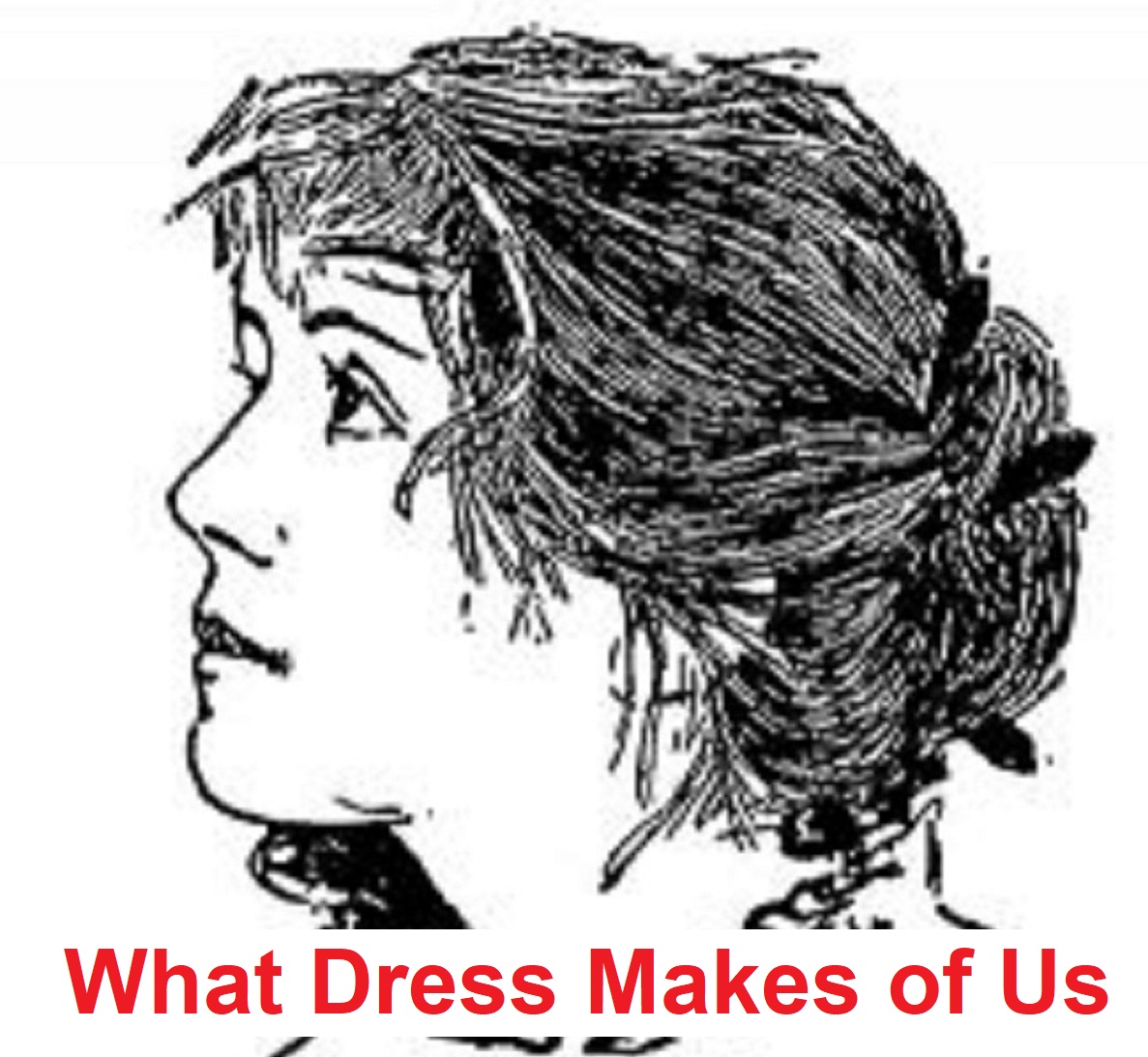 What Dress Makes of Us,
Illustrated, by Dorothy Quigley
What Dress Makes of Us,
Illustrated, by Dorothy QuigleyPractical clothing advice for women, first published in 1897. "Did you ever observe, dear comrade, what an element of caricature lurks in clothes? A short, round coat on a stout man seems to exaggerate his proportions to such a ridiculous degree that the profile of his manly form suggests "the robust bulge of an old jug." A bonnet decorated with loops of ribbon and sprays of grass, or flowers that fall aslant, may give a laughably tipsy air to the long face of a saintly matron of pious and conservative habits. A peaked hat and tight-fitting, long-skirted coat may so magnify the meagre physical endowments of a tall, slender girl that she attains the lank and longish look of a bottle of hock."
99 cents at Kobo
99 cents at Nook (Barnes and Noble)
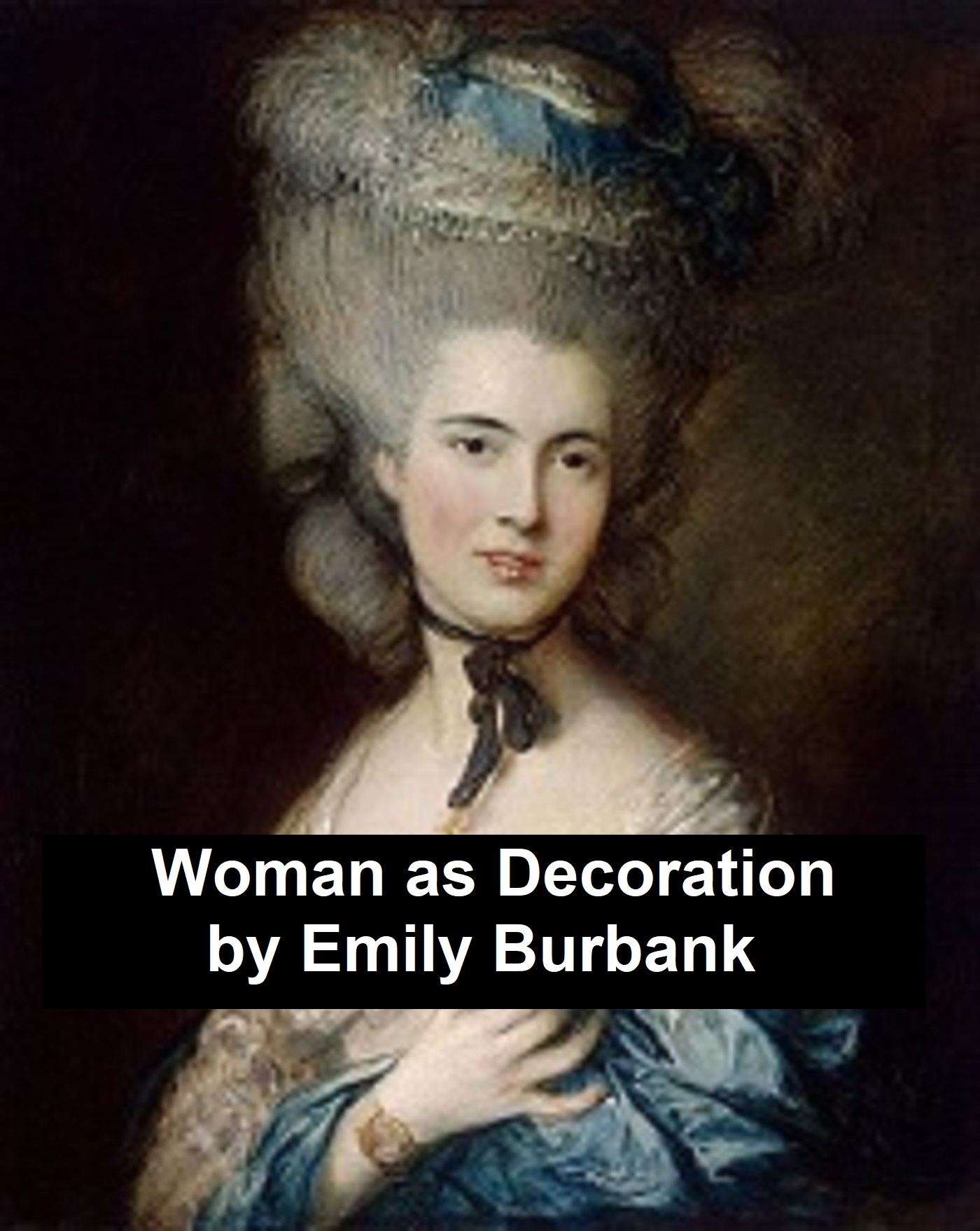 Woman as Decoration,
Illustrated, by Emily Burbank
Woman as Decoration,
Illustrated, by Emily BurbankFirst published in 1917, advice which was seriously meant at the time it was written can now be read as humor. As explained in the Foreword: "WOMAN AS DECORATION is intended as a sequel to "The Art of Interior Decoration" (Grace Wood and Emily Burbank). Having assisted in setting the stage for woman, the next logical step is the consideration of woman, herself, as an important factor in the decorative scheme of any setting,--the vital spark to animate all interior decoration, private or public. The book in hand is intended as a brief guide for the woman who would understand her own type,--make the most of it, and know how simple a matter it is to be decorative if she will but master the few rules underlying all successful dressing. As the costuming of woman is an art, the history of that art must be known--to a certain extent--by one who would be an intelligent student of our subject. With the assistance of thirty-three illustrations to throw light upon the text, we have tried to tell the beguiling story of decorative woman, as she appears in frescoes and bas reliefs of Ancient Egypt, on Greek vases, the Gothic woman in tapestry and stained glass, woman in painting, stucco and tapestry of the Renaissance, seventeenth, eighteenth and nineteenth century woman in portraits."
99 cents at Kobo
99 cents at Nook (Barnes and Noble)
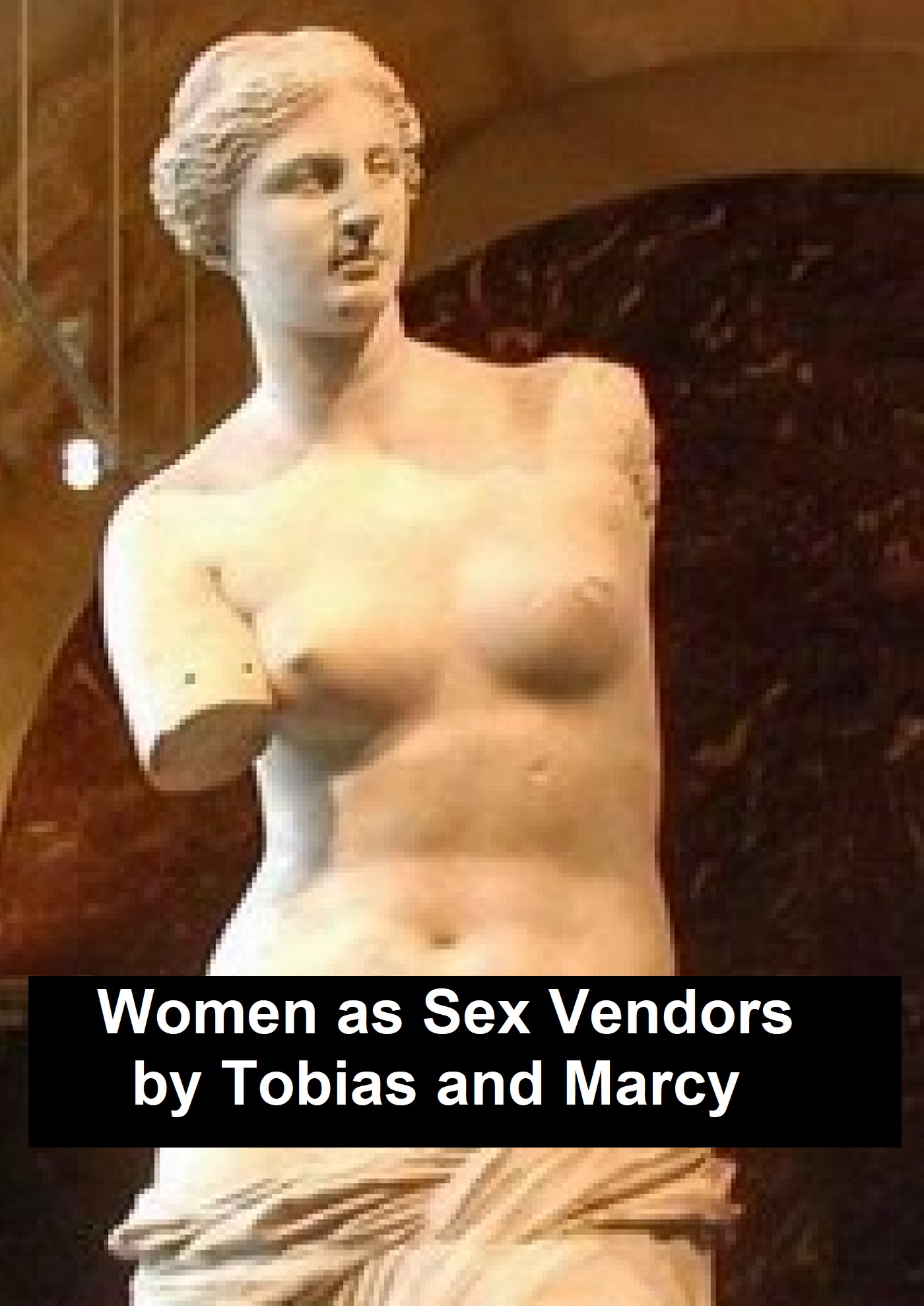 Women as Sex Vendors or
Why Women Are Conservative (Being a View of the Economic Status
of Women) by R. B. Tobias
Women as Sex Vendors or
Why Women Are Conservative (Being a View of the Economic Status
of Women) by R. B. TobiasFirst published in 1918. The book begins: "We have often heard discussions of the reason we do not find women, as a sex, in the vanguard of world affairs; why the great educators, strong figures in progressive or revolutionary movements, are men rather than women; why these movements, themselves, are made up almost entirely of men rather than women. People have asked over and over again why, in the fields of the arts, the sciences, in the world of "practical affairs," men, rather than women, generally excel."
99 cents at Kobo
99 cents at Nook (Barnes and Noble)
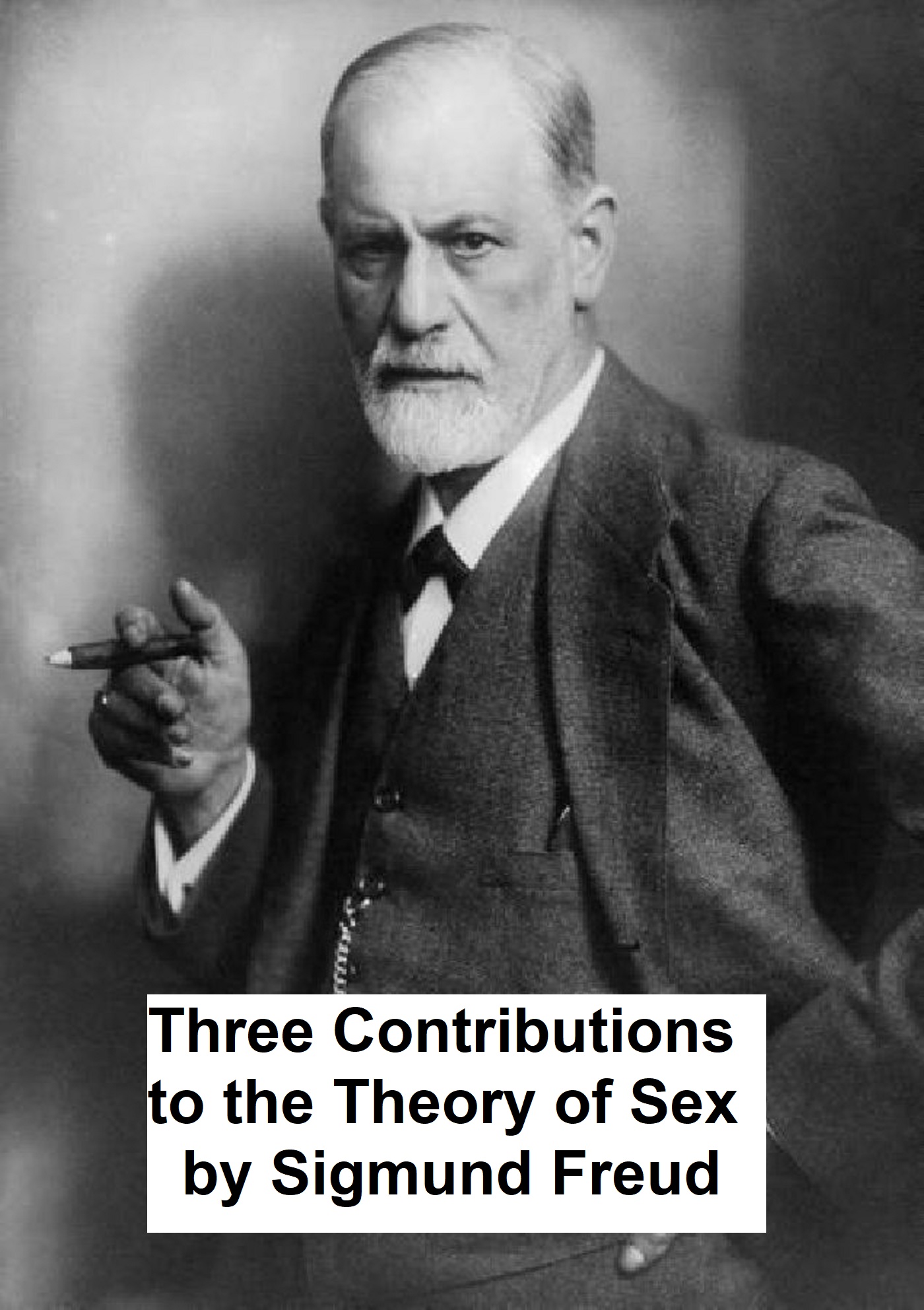 Three Contributions to
the Theory of Sex by Sigmund Freud
Three Contributions to
the Theory of Sex by Sigmund FreudAccording to Wikipedia: "Three Essays on the Theory of Sexuality (German: Drei Abhandlungen zur Sexualtheorie), sometimes titled Three Contributions to the Theory of Sex, is a 1905 work by Sigmund Freud which advanced his theory of sexuality, in particular its relation to childhood... Sigmund Freud (May 6, 1856 – September 23, 1939), was an Austrian neurologist who founded the psychoanalytic school of psychology. Freud is best known for his theories of the unconscious mind and the defense mechanism of repression and for creating the clinical practice of psychoanalysis for treating psychopathology through dialogue between a patient and a psychoanalyst. Freud is also renowned for his redefinition of sexual desire as the primary motivational energy of human life, as well as his therapeutic techniques, including the use of free association, his theory of transference in the therapeutic relationship, and the interpretation of dreams as sources of insight into unconscious desires. He was also an early neurological researcher into cerebral palsy. While many of Freud's ideas have fallen out of favor or have been modified by Neo-Freudians, and modern advances in the field of psychology have shown flaws in many of his theories, Freud's work remains important in the history of clinical psychodynamic approaches. In academia, his ideas continue to influence the humanities and some social sciences."
99 cents at Kobo
99 cents at Nook (Barnes and Noble)
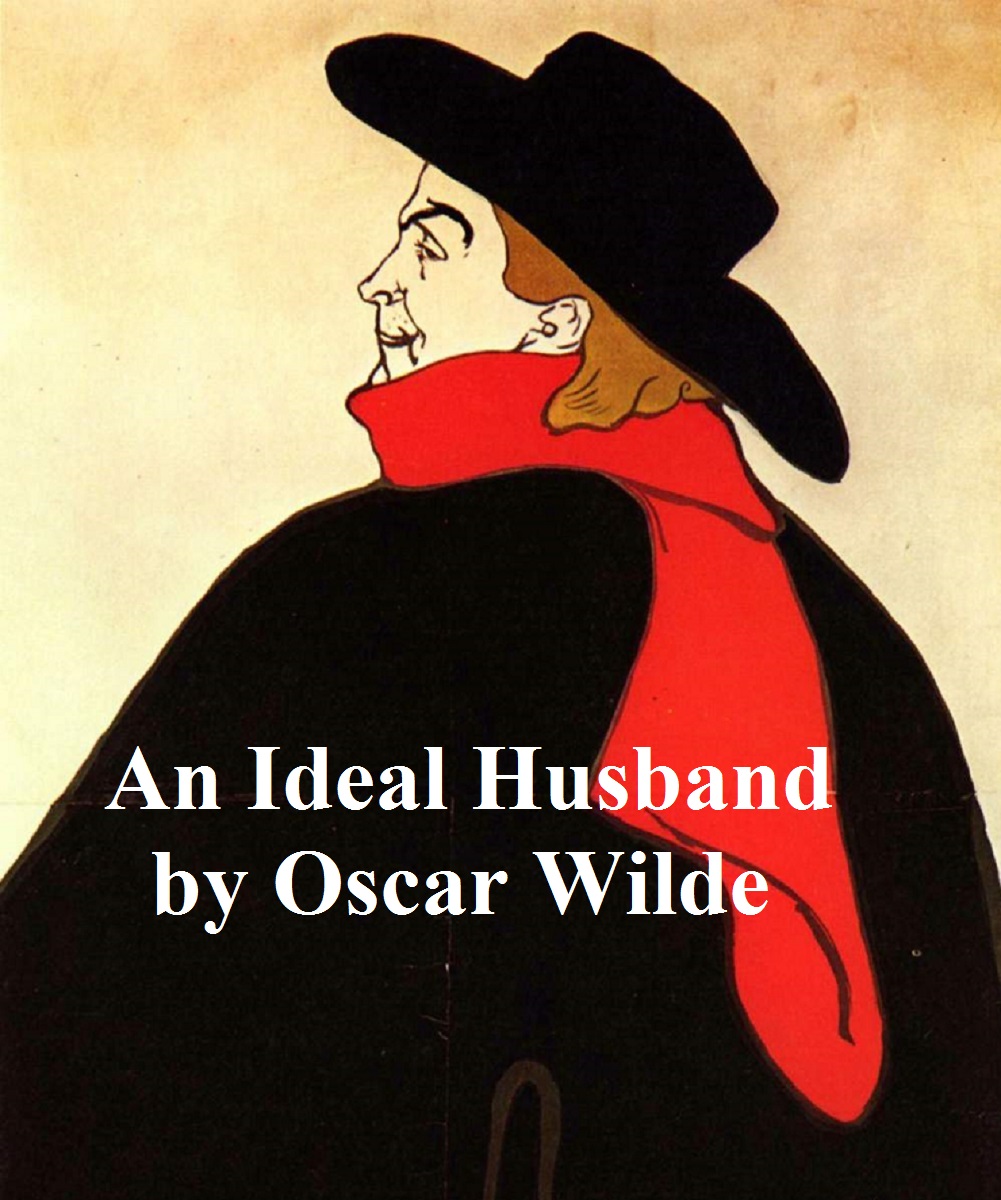 An Ideal Husband by
Oscar Wilde
An Ideal Husband by
Oscar WildeClassic play. According to Wikipedia: "An Ideal Husband is an 1895 comedic stage play by Oscar Wilde which revolves around blackmail and political corruption, and touches on the themes of public and private honour. The action is set in London, in "the present", and takes place over the course of twenty-four hours. "Sooner or later," Wilde notes, "we shall all have to pay for what we do." But he adds that, "No one should be entirely judged by their past." Together with The Importance of Being Earnest, it is often considered Wilde's dramatic masterpiece. After Earnest it is his most popularly produced play... Oscar Fingal O'Flahertie Wills Wilde (1854 - 1900) was an Irish playwright, novelist, poet, and author of short stories. Known for his barbed wit, he was one of the most successful playwrights of late Victorian London, and one of the greatest celebrities of his day. As the result of a famous trial, he suffered a dramatic downfall and was imprisoned for two years of hard labour after being convicted of the offence of 'gross indecency.'"
99 cents at Kobo
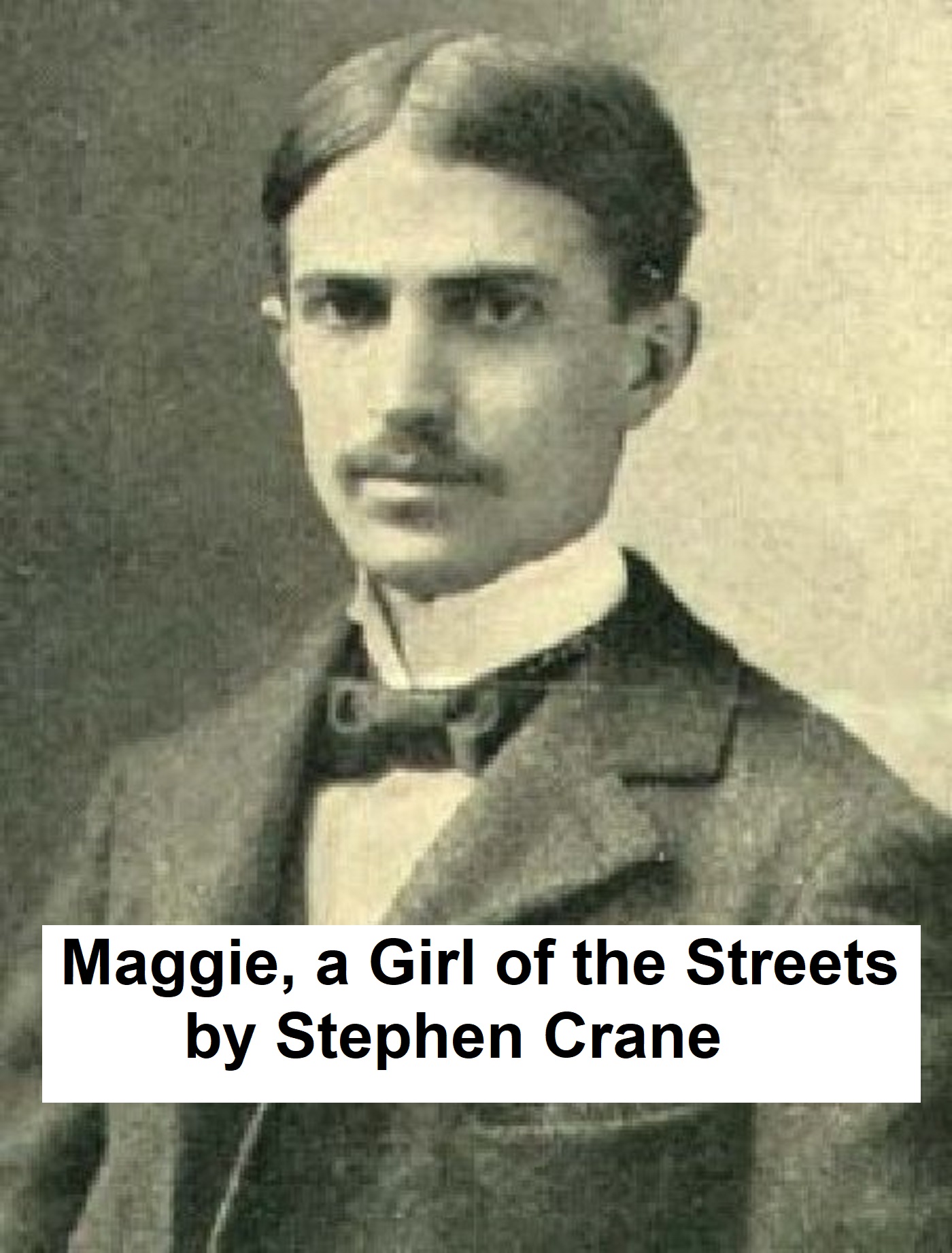 Maggie, a Girl of the
Streets by Stephen Crane
Maggie, a Girl of the
Streets by Stephen CraneClassic tale of prostitution in 19th Century American, by the author of The Red Badge of Courage. According to Wikipedia: "Maggie: A Girl of the Streets is an 1893 novella by American author Stephen Crane (1871–1900). The story centers on Maggie, a young girl from the Bowery who is driven to unfortunate circumstances by poverty and solitude. The work was considered risqué by publishers because of its literary realism and strong themes. Crane – who was 22 years old at the time – financed the book's publication himself, although the original 1893 edition was printed under the pseudonym Johnston Smith. After the success of 1895's The Red Badge of Courage, Maggie was reissued in 1896 with considerable changes and re-writing... Stephen Crane (1871 – 1900) was an American novelist, short story writer, poet and journalist. Prolific throughout his short life, he wrote notable works in the Realist tradition as well as early examples of American Naturalism and Impressionism. He is recognized by modern critics as one of the most innovative writers of his generation. The eighth surviving child of highly devout parents, Crane was raised in several New Jersey towns and Port Jervis, New York. He began writing at an early age and had published several articles by the age of 16. Having little interest in university studies, he left school in 1891 and began work as a reporter and writer. Crane's first novel was the 1893 Bowery tale Maggie: A Girl of the Streets, which critics generally consider the first work of American literary Naturalism. He won international acclaim for his 1895 Civil War novel The Red Badge of Courage, which he wrote without any battle experience."
99 cents at Kobo
99 cents at Nook (Barnes and Noble)
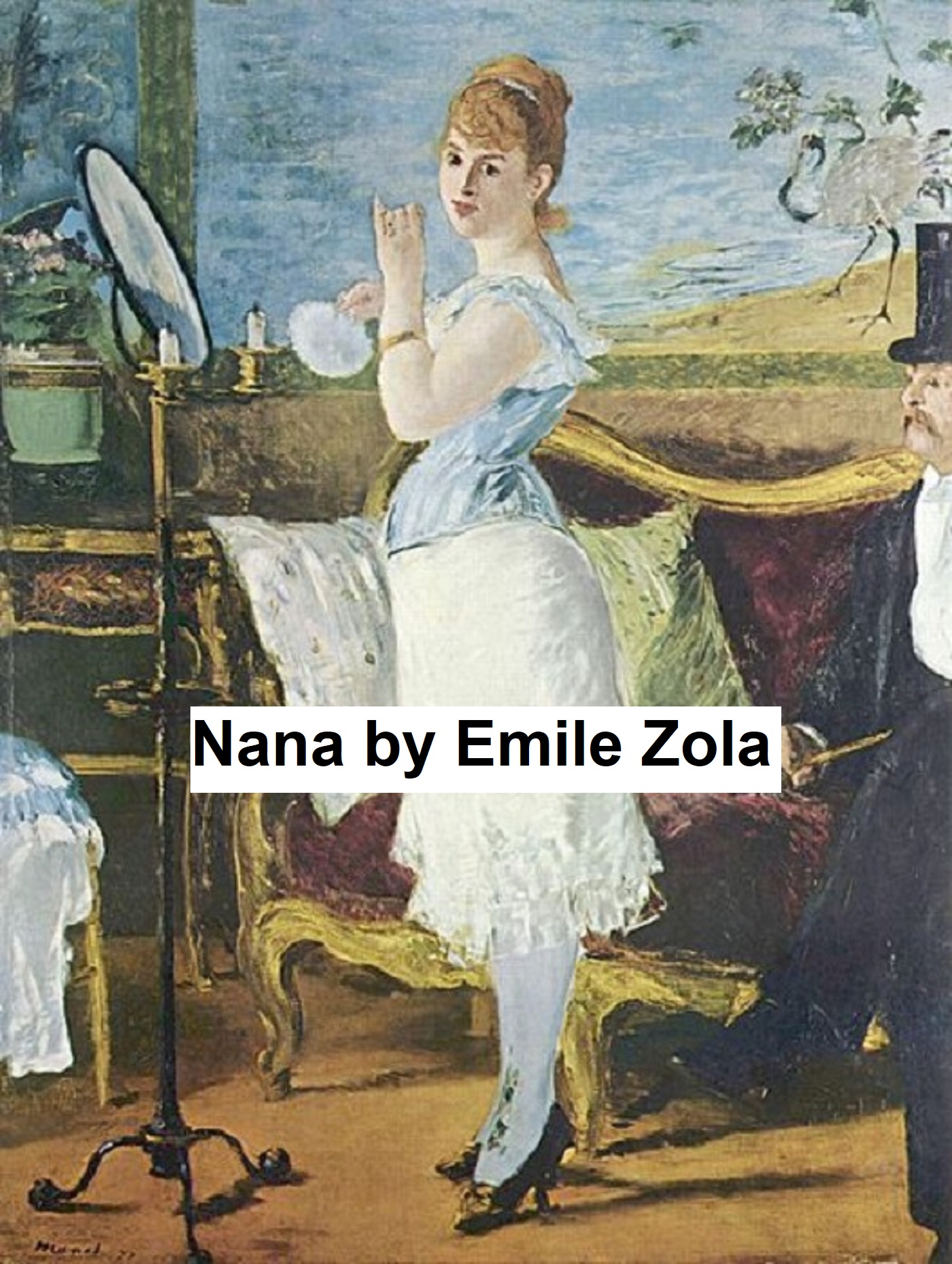 Nana, in English
translation, by Emile Zola
Nana, in English
translation, by Emile ZolaClassic naturalist novel about a prostitute in Paris, in English translation. First published in 1880. According to Wikipedia: "Nana is a novel by the French naturalist author Émile Zola. Completed in 1880, Nana is the ninth installment in the 20-volume Les Rougon-Macquart series, the object of which was to tell "The Natural and Social History of a Family under the Second Empire", the subtitle of the series....Nana tells the story of Nana Coupeau's rise from streetwalker to high-class cocotte during the last three years of the French Second Empire. Nana first appears in the end of L'Assommoir (1877), another of Zola's Rougon-Macquart series, in which she is portrayed as the daughter of an abusive drunk; in the end, she is living in the streets and just beginning a life of prostitution.... Emile Zola (2 April 1840 - 29 September 1902) was an influential French writer, the most important example of the literary school of naturalism, and a major figure in the political liberalization of France..."
99 cents at Kobo
99 cents at Nook (Barnes and Noble)
According to Wikipedia: "Madame Bovary (1856) is Gustave Flaubert's first published novel and is considered his masterpiece. The story focuses on a doctor's wife, Emma Bovary, who has adulterous affairs and lives beyond her means in order to escape the banalities and emptiness of provincial life. Though the basic plot is rather simple, even archetypal, the novel's true art lies in its details and hidden patterns. Flaubert was a notorious perfectionist and claimed always to be searching for le mot juste ("the right word"). The novel was attacked for obscenity by public prosecutors when it was first serialized in La Revue de Paris between 1 October 1856 and 15 December 1856, resulting in a trial in January 1857 that made the story notorious. After the acquittal on 7 February 1857, it became a bestseller when it was published as a book in April 1857, and now stands virtually unchallenged not only as a seminal work of Realism, but as one of the most influential novels ever written."
99 cents at Kobo
99 cents at Nook (Barnes and Noble)
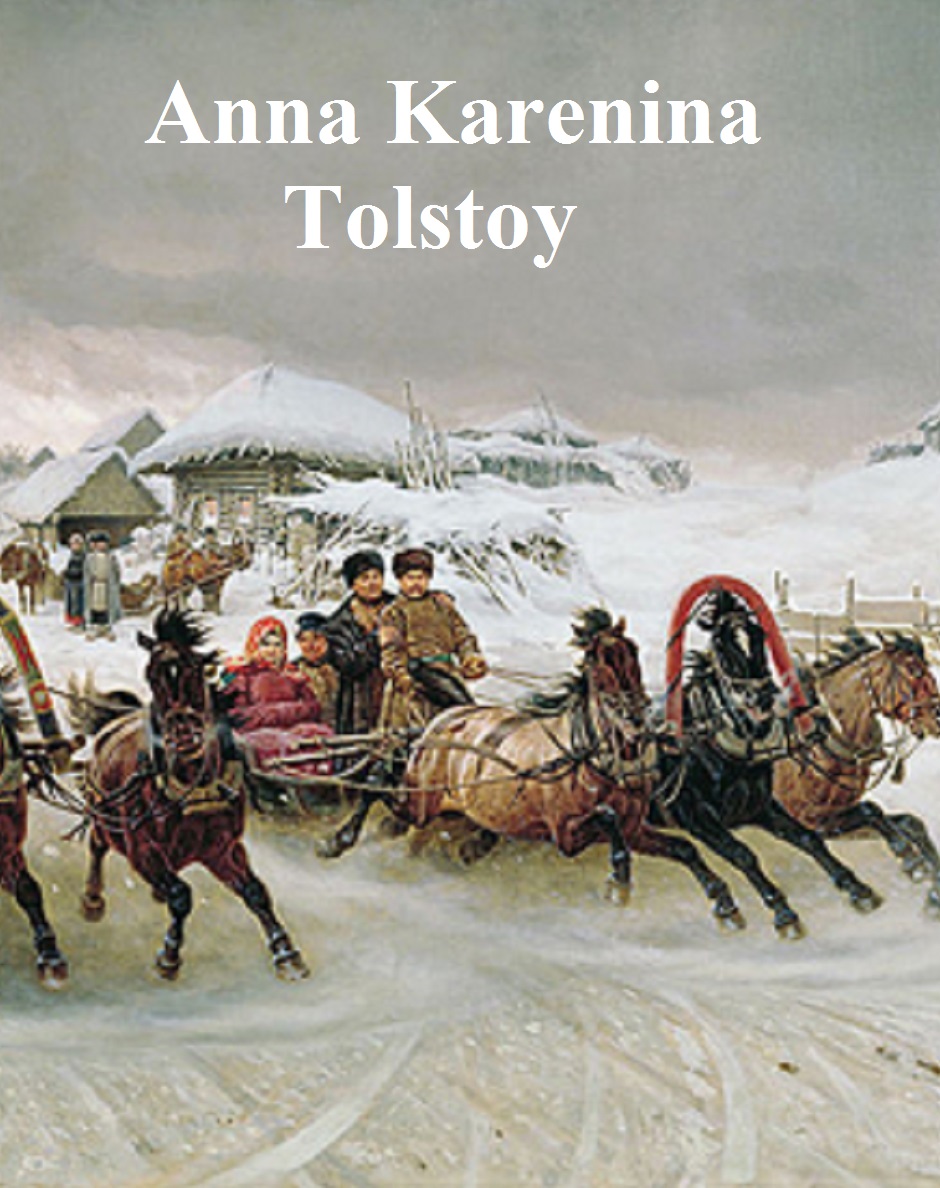 Anna Karenina by Leo
Tolstoy
Anna Karenina by Leo
TolstoyThe classic Tolstoy novel. According to Wikipedia: "Anna Karenin is a novel by the Russian writer Leo Tolstoy, published in serial installments from 1873 to 1877 in the periodical The Russian Messenger. Tolstoy clashed with editor Mikhail Katkov over political issues that arose in the final installment (Tolstoy's unpopular views of volunteers going to Serbia); therefore, the novel's first complete appearance was in book form. Widely regarded as a pinnacle in realist fiction, Tolstoy considered Anna Karenina his first true novel, when he came to consider War and Peace to be more than a novel. Fyodor Dostoevsky declared it to be "flawless as a work of art". His opinion was shared by Vladimir Nabokov, who especially admired "the flawless magic of Tolstoy's style", and by William Faulkner, who described the novel as "the best ever written". The novel is currently enjoying popularity, as demonstrated by a recent poll of 125 contemporary authors by J. Peder Zane, published in 2007 in "The Top Ten" in Time, which declared that Anna Karenina is the "greatest novel ever written."
99 cents at Kobo
99 cents at Nook (Barnes and Noble)
seltzer@seltzerbooks.com privacy statement